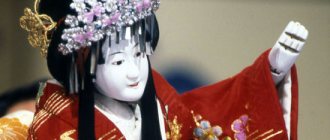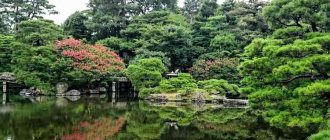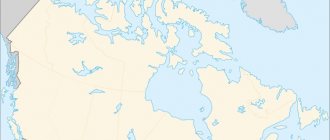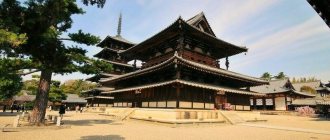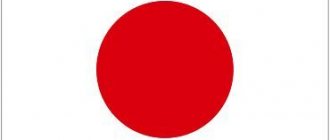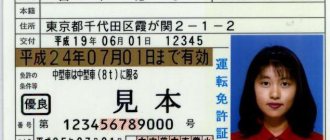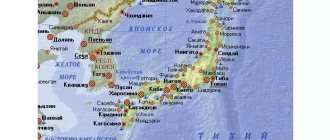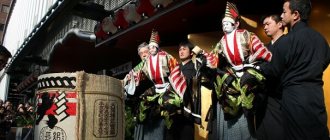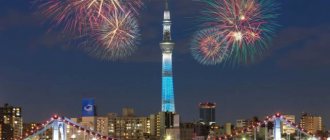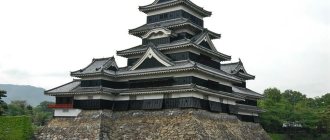Japan is a unique country. In many ways, it is the people who make it unique. With an almost complete absence of mineral resources, in a climate not very favorable for agriculture, and having survived quite serious losses in World War II, the Japanese managed to preserve their national identity and create one of the most powerful economies in the world. It is also worth considering that Japan is one of the few highly developed countries located exclusively on islands. The Land of the Rising Sun is the fourth largest island nation in the world by area. In terms of territory size, it is second only to Indonesia, Madagascar and Papua New Guinea.
There are 6,852 islands belonging to Japan, all of which are part of the Japanese archipelago. People live on only 430 islands, but the vast majority of the population is concentrated on just the four largest islands. Each of them is worthy of a separate story.
Honshu
Geography and demographics
The island of Honshu is larger in size than all its neighbors in the archipelago. With an area of 228 thousand square meters. km, this island would not get lost even in the company of independent states. Honshu is only slightly smaller in area than Romania, but larger than Belarus, Uruguay or Syria. And in terms of population - more than 100 million people - Honshu would confidently enter the top twenty countries, ahead of Egypt, Vietnam and Germany. The largest island, which covers 60% of the country's territory, is home to 80% of the Japanese. The territory of Honshu is divided into 34 prefectures, which are combined into five regions.
Corresponds to the size of the territory and the variety of climatic conditions on Honshu. The southeastern part of the island, protected from cold winds by mountains (the legendary Fuji is also located on Honshu), blissfully enjoys a subtropical climate on the shores of the Pacific Ocean. In the north-west of the island the climate is quite sharply continental
Tokyo
The capital of Japan is located in the southeast of Honshu. The population of Tokyo is about 14 million people. It is known that people lived in Tokyo back in the Stone Age, but the history of the city dates back to the 12th century, when a fort called Edo was built here. Tokyo became the capital of the state in 1868. In the 20th century, Tokyo suffered serious damage twice - in the 20s due to an earthquake, and in the 40s due to American bombing. However, just 20 years after the end of World War II, Tokyo became the largest metropolis with a highly developed industry.
Tokyo's gross domestic product exceeds one and a half trillion dollars, but much of the city's output cannot be touched. The Japanese capital is, first of all, a financial and administrative center. Due to the desire of large companies to have offices in Tokyo, living in the city is very expensive. This applies to land, housing, and the overall cost of living. Tokyo has been recognized as the most expensive city in the world for many years in a row, only in recent years losing this dubious honor to Singapore, Hong Kong and Zurich.
Yokohama
Yokohama, with a population of 3.7 million, is the second city in Japan according to this criterion. It is interesting that the two most populated Japanese metropolises are de jure separated by only about 30 kilometers, although in practice Tokyo and Yokohama merge into one agglomeration.
The history of Yokohama is inextricably linked with the port. As soon as Japan opened to the outside world in the 19th century, a port appeared on the site of two fishing villages. He gave impetus to the development of the city. This development was not slowed down even by the earthquake of 1923, which destroyed 60,000 houses and claimed 20,000 lives. Yokohama has become a powerful transport hub where sea and railway routes intersect.
The city is home to many high-tech enterprises, as well as the offices of several of Japan's largest corporations. The main attraction of Yokohama is the suspension road bridge connecting the shores of Tokyo Bay.
About the climate
Tourists, as a rule, prefer to travel around the island of Honshu. The main cultural attractions of the country, the capital Tokyo and the largest cities of Japan - Osaka, Yokohama, Kyoto are concentrated here. Cities such as Hiroshima and Nagasaki, which were subjected to nuclear bombing, are also located on this island.
The climate is subtropical, with two rainy seasons a year. But this is not the case everywhere. The Japanese islands stretch for many kilometers, across several climatic zones.
The northern territories, next to the disputed ones, are subject to the same cold weather as in the Far East. Hokkaido has cool summers up to plus 22º and snowy winters. This is very different from conditions on other islands. The Japanese come to the mountains of Hokkaido to ski and play in the snow. This place is considered a tourist center for locals.
In summer, the mountains are cool, which also attracts vacationers, for example, from Okinawa. This island is located in the subtropical zone. It is hot and muggy, and there is a spring rainy season with characteristic features.
Hokkaido
Geography, demography and economics
The second largest island in the Japanese archipelago, Hokkaido, is the most un-Japanese of all the Japanese islands. It is located farthest north of all, so, according to the Japanese, it is terribly cold. It's no joke, the average annual temperature is only +8. Accordingly, the population density in Hokkaido is minimal by Japanese standards - 66 people per square kilometer (in Honshu, for example, this figure is 439).
Hokkaido in Japan is about the same as Alaska in the USA. The people live quite poorly, but look down on other Japanese. Firstly, because of the climate, and secondly, because the majority of the population of Hokkaido outside the largest city of Sapporo is engaged in productive work, rather than being classified as white-collar workers. On the island they engage in agriculture and fishing, mine coal and iron ore, cut timber and produce paper.
Sapporo
The largest city and administrative center of Hokkaido is Sapporo. This city is best known throughout the world for hosting the 1972 Winter Olympics. Sapporo (pop. 2 million) is more like the rest of Japan. The majority of the city's population is employed in the service sector. Sapporo is the center of a large climatic resort and winter sports. The snow festival, held every year in early February, attracts millions of visitors.
Interesting Facts
Where are the Seychelles Islands? Seychelles islands on the world map
Eastern philosophy, closely intertwined, but not dissolved with Western values, creates an unprecedented background of life, forming a completely unique mentality and way of life of the inhabitants.
Here are some interesting facts about life in this country:
- Currently, there is a trend among women in Japan for crooked teeth. After paying huge amounts of money to dentists, they end up with long and protruding fangs.
- The country is distinguished by its life expectancy; today more than 65 thousand people live here, whose age has passed 100 years.
- There are legends about the ability of Eastern people to work. In Japan, career obsession is on the rise. Young people give up family, having children, and sometimes even sex in favor of work.
- In this regard, most residents work 12 hours a day with a six-day work week.
- People here are taught to work from an early age. Children in schools clean their own classrooms.
Kyushu
Geography, demography and economics
Some historians believe that Japanese civilization began on the island of Kyushu. The relief of the third largest Japanese island is highly rugged. There are no too high mountains, but hardly a quarter of the territory of Kyushu can be classified as plains.
The climate on the southernmost of the large Japanese islands is subtropical and mild. Kyushu has many rivers and underground springs, and the island is rich in diverse vegetation.
More than 12 million people live on the island. With an island area of 40.5 thousand square meters. km, the population density is almost 300 people per square meter. km.
Production in Kyushu is quite clearly divided geographically - industry is concentrated in the north of the island, agriculture in the south. Chemistry, metallurgy and metalworking are well developed. Farmers grow industrial crops, rice and raise livestock.
Fukuoka
The city of Fukuoka was a port connecting Japan to the continent back in the first millennium AD. Accordingly, the city developed as a commercial and cultural center. In the middle of the last century, Fukuoka also became an industrial center. These same industries are developed in the city today.
In addition, the city with a population of 1.5 million people has enterprises producing computers and telecommunications equipment, mechanical engineering products and electrical goods. Fukuoka is the junction of almost all the island's railways and roads.
Sights of Japan - an unusual state on the entire planet
The largest islands in the world: names, location on the map. top 10 list
The extent of Japan's culture and tradition is captivating with its auspicious beauty. Millions of tourists come here to look at this amazing country, as well as get acquainted with the magnificent landscapes and, of course, enjoy the sights of Japan.
1. Fushimi Temple - Inari. This building is considered one of the significant symbols of Japan. It is known for having a colossal number of Torii Gates, which were sacrificed. They are standing along the path to the temple. It will take about 2-3 hours to walk along this path to the holy building. Along the way you can see sculptures of foxes.
And also along the way there will be an observation deck from which you can see the city of Kyoto. This whole view fascinates not only travelers, but also the local population, so that they want to come back here again and again. It is best to plan a trip to the temple in the evening, because it will not be so hot.
Main attractions of Japan
2. One of the most tourist places in Japan is Itsukushima Shrine. Its beauty will not leave anyone indifferent. The sanctuary was built in the 6th century, the place is considered holy, pregnant girls were sent from the island so that there would be no deaths or births of children on it. 3. Tokyo Sky Tree. About half a million people worked on the TV tower. The observation deck has an excellent and amazing view of the city.
Significant Japanese objects
4. We continue to talk about the attractions in the city of Tokyo. They also include the Tsukiji Fish Market. Due to its size, it has become one of the main attractions of the city of Tokyo. Such markets very rarely refer specifically to places of interest. Tsukiji Market is located in the very center of Tokyo. Every day, up to 2 thousand tons of all kinds of seafood are prepared here. 5. Sagano Bamboo Forest. A colorful bamboo forest of many much larger green trees. Everyone who travels to Japan needs to visit there. Also in Japan, local residents believe that the plant protects against evil spirits. For this reason, bamboo is used to weave baskets and dishes. 6. Snow monkeys in hot springs (Nagano). On the Yokoyu River there is a delightful Jigokudani Snow Monkey Park. There are more than 200 of them on the territory. The monkeys seem to be in big hot baths, basking and rubbing against each other. In winter, Japanese monkeys eat berries and leaves. In the warm season, they eat all kinds of insects. 7. Golden Pavilion. It is most famous among travelers and the local population. It was built in 1397. Many styles associated with it:
- aristocracy;
- samurai simplicity.
On the roof of the Golden Pavilion there is a figure of a phoenix; in almost all different nations, the symbol of the phoenix means the Sun - eternal life. People believe that the phoenix bird cannot die; when the chick hatches from the egg, it will ignite again.
Excursion tour through the regions of a contrasting country
8. Mount Fuji. It is also given the name Fuji. Absolutely everyone dreams of climbing it. Women were prohibited from conquering the mountain until 1800. Fuji is an active volcano located on the island of Honshu. 9. Castle of the White Heron. This facility was built in 1 year. There is an extraordinary fish on the roof - this is a magical amulet that protects the White Heron Palace from flames. Over time, loopholes of various shapes and sizes and towers appeared here. 10. Ginza region. Translated from Japanese, “ginza” means “coin”. This is the most fun and noisy area in Tokyo. In the evening, a lot of different shops, shopping centers, restaurants, clubs create an atmosphere of boundless fun. 11. Tokyo Disneyland. One of the largest parks in the world. Here, each of the residents and tourists will have an unforgettable experience, fun and adventure.
Shikoku
Geography and demographics
Shikoku Island boasts the title of the smallest of the large Japanese islands. The mild climate and developed river network favor the development of agriculture, so the island is underdeveloped industrially. Industry, which is based on metallurgy and shipbuilding, is concentrated in the north of Shikoku. In the south, where two harvests can be harvested a year, people are mainly engaged in agriculture.
On an island with an area of 18.8 thousand square meters. km. 4 million people live. The population is gradually aging and shrinking - young people are leaving Shikoku, moving to more developed regions of Japan. Even the construction of bridges between Shikoku and the island of Honshu does not help the outflow of population.
Matsuyama
Matsuyama is not only the largest city on the island of Shikoku. This is the real capital of haiku. Six times a year, the city holds a competition for the best traditional Japanese poetry. Every year, up to 50,000 poetic works participate in competitions.
Matsuyama is another of the oldest cities in Japan, which became part of the state back in the 4th century AD. After a series of historical upheavals, the city became the center of the prefecture, which sharply increased its status.
Nowadays, enterprises in the paper, textile and engineering industries, as well as petrochemical production, operate in Matsuyama. The city generates a lot of income from tourists visiting historical castles, temples, and pilgrims - 8 Matsuyama temples are included in the famous Buddhist pilgrimage route 140 kilometers long.
Economy and industry
Modest agricultural opportunities force the Japanese to look for other ways to develop the economy.
Thus, fish and seafood play a big role in the life of the islanders. The fishing industry has always provided Japan with essential food.
Rice and fish are part of their daily diet.
Apart from the food industry, the country produces some of the best cars in the world. The Toyota and Mitsubishi concerns are known far beyond Japan. The characteristics of Japanese equipment have not needed advertising for a long time.
The Eurasian continent, like the North American one, is a big fan of Japanese products.
Being a high-tech country, cybernetic scientists have been developing robotics since the end of the 20th century. Today, this sector of the economy has reached unprecedented heights.
The annual design of robots totals more than 60 thousand units, most of which are exported.
Japan was formed 2.5 thousand years ago. This age was enough for her to create on the islands one of the most developed countries in the world, with a high level of GDP, the most educated population and the lowest mortality rate among newborns.
People inhabiting the land of the rising sun live the longest in the world, their national dish has conquered the planet. This is truly a great, unique country that it would be a shame not to visit.
Relief of the country
The relief of Japan consists of plains and mountains. The plains are located along the coastline and mountain slopes. The largest plains are located along the Ishikari River (Hokkaido Island), and the Kanto Plain is located along Tokyo Bay. The main part of Japan's territory is occupied by mountains that stretch from north to south. Hokkaido is famous for its volcanic mountain range, which begins on the territory of the Russian Federation. The mountains of Japan are not inferior in beauty to the Alps, which is why they are called the Japanese Alps.
Mount Fuji, which reaches a height of 3,776 meters, is the highest point in the country. There are approximately 188 volcanoes in Japan, of which 40 are active. Residents of the country are adapting to life in relative danger due to the possibility of a volcanic eruption, earthquakes or tsunamis. Therefore, houses are furnished with minimal amenities and a set of furniture. The entire design is simple and light. An unspoken rule is the arrangement of things in the house: nothing heavy should be placed above a person’s head in order to avoid injury during seismic activity.
The largest cities in the Land of the Rising Sun are Tokyo, Kobe, Osaka, Kyoto and Nagoya. These cities are very popular among tourists, so they often ask: “What continent is Tokyo located on?” Japan attracts huge numbers of tourists every year, despite the danger of earthquakes and tsunamis.
Level of industry and agriculture
Impact on the environment
Agriculture in Japan is one of the main sectors of the economy - farming, animal husbandry, fishing, and forestry are popular.
Japan is located on islands, so one of its key industries is fishing. Lovers of seafood and other exotic foods flock here from all over the world to try the freshest and most exquisite delicacies. And for lovers of ears, rolls, and sashimi, this is truly a gastronomic paradise.
One of the amazing and grandiose events in the country is the annual auction for the sale of giant bluefin tuna. This fish is found in the Pacific Ocean and sometimes reaches enormous sizes. Thus, in 2018, tuna weighing 405 kg was sold for 323 thousand dollars at an auction at the legendary Tsukiji market.
Islands on the outer side of the archipelago
List of main islands located on the outer side of the archipelago:
- Enoshima is a small landmass of volcanic formation. It is part of the Fujisawa administrative district, connected to the mainland by a bridge. Here in 1964 a sports harbor was built for the Olympics. The 2021 regatta is planned to be held in Enoshima.
- Izu is a volcanic island chain that is part of Tokyo. Located at a distance of 100-350 km from the Japanese capital. These scenic spots are included in the national park. Tokyo residents love to relax here, and people involved in water sports also spend time here.
- Izuoisma (area 91 km2) is the largest in the Izu archipelago group. There is a volcano called Mihara (764 m), which is popular among tourists. It is connected to the capital of the country by ferry and air routes.
- Toshima is a volcanic landmass that is part of Tokyo Prefecture and has 304 inhabitants. The island's territory is 4.1 km2. On 80% of the land there are specific forests, which are colored red during flowering. The village of the same name is the local government unit in Toshima.
